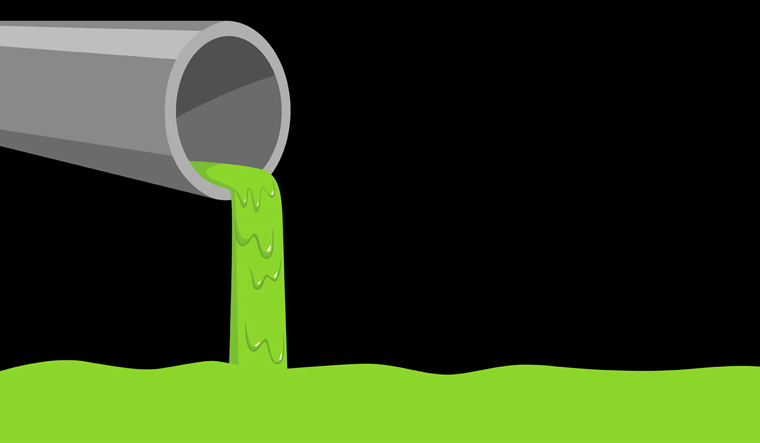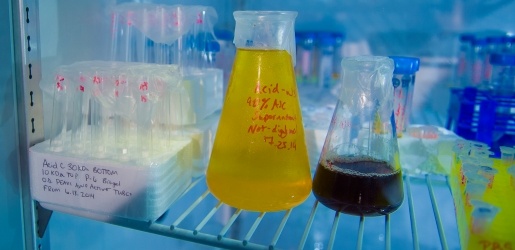Professional Liquid Waste Removal Melbourne: Rapid and Inexpensive Providers
Professional Liquid Waste Removal Melbourne: Rapid and Inexpensive Providers
Blog Article
How Fluid Garbage Disposal Functions: An In-depth Summary of Methods and Technologies Utilized

Summary of Liquid Waste Types
The intricacy of liquid waste types demands an extensive understanding of their features and effects for disposal. Liquid waste can broadly be classified right into a number of kinds, consisting of industrial, local, agricultural, and contaminated materials. Each category displays distinct residential properties, calling for details management approaches to alleviate ecological and health risks.
Industrial liquid waste originates from manufacturing procedures and commonly consists of a series of pollutants, such as heavy steels, solvents, and natural substances. Local liquid waste, mainly making up wastewater from homes and business facilities, includes raw material, nutrients, and virus (industrial wastewater treatment). Agricultural liquid waste, consisting of drainage from farms, might have fertilizers, pesticides, and animal waste, presenting dangers to water high quality and ecological communities
Unsafe fluid waste is characterized by its poisoning, sensitivity, or potential to cause injury. This category consists of materials like acids, bases, and specific chemicals that require rigorous handling and disposal procedures. Recognizing these varied fluid waste types is essential for creating reliable disposal techniques and guaranteeing compliance with ecological policies. Appropriate category and characterization are important for implementing appropriate treatment strategies and minimizing the adverse influence on public health and wellness and the environment.
Physical Therapy Techniques

Testing is the preliminary action, where larger fragments and debris are removed from the liquid waste making use of displays or grates. This process protects downstream equipment from damage and makes certain smoother procedure. Adhering to screening, sedimentation utilizes gravitational force to different solids from liquids. In sedimentation storage tanks, heavier particles work out near the bottom, creating a sludge layer, while the cleared up fluid can be additional treated.
Filtration is another essential approach that includes passing the fluid via porous materials, such as sand or membranes, to capture smaller sized particles. This step enhances the top quality of the liquid, making it appropriate for subsequent treatment processes.

Chemical Treatment Strategies
Chemical therapy methods are necessary for properly managing fluid waste, particularly in addressing dissolved and colloidal pollutants that physical approaches may not appropriately eliminate. These strategies use numerous chemical representatives to neutralize, precipitate, or transform unsafe materials right into much less hazardous kinds.
One common technique is coagulation and flocculation, where chemicals such as alum or ferric chloride are contributed to advertise the aggregation of suspended fragments. This procedure improves sedimentation, enabling simpler removal of the resulting sludge. Additionally, oxidation procedures, using representatives like chlorine or ozone, are utilized to damage down complicated natural compounds and virus, rendering the waste much safer for discharge or additional therapy.
Neutralization is one more critical method, which readjusts the pH of acidic or alkaline waste streams to neutral levels, stopping possible injury to downstream systems and the atmosphere. Additionally, progressed oxidation processes (AOPs) use combinations of oxidants and ultraviolet light to break down consistent pollutants, attaining a higher degree of therapy efficiency.
Biological Therapy Processes
Biological therapy processes play a critical function in the monitoring of fluid waste by making use of bacteria to decay organic matter and minimize impurity degrees. These procedures can be generally industrial wastewater treatment solutions classified into cardio and anaerobic treatments, each utilizing specific microbial neighborhoods to attain efficient waste degradation.
Aerobic therapy includes making use of oxygen to promote the break down of natural products by germs. This process is frequently executed in turned on sludge systems, where oygenation storage tanks give a conducive atmosphere for microbial development, leading to the oxidation of natural pollutants. The resultant biomass can be divided from dealt with effluent via sedimentation.
On the other hand, anaerobic therapy takes place in the absence of oxygen, counting on various bacteria to damage down natural matter. This method is specifically beneficial for high-strength waste, as it generates biogas, a renewable resource resource, while decreasing sludge production. Technologies such as anaerobic digesters are regularly used in commercial and community applications.
Both aerobic and anaerobic organic therapies not just minimize the environmental impact of liquid waste however also facilitate resource recovery, making them necessary elements of sustainable waste administration techniques. Their effectiveness, efficiency, and versatility sustain their widespread application across numerous industries.
Emerging Technologies in Disposal
Ingenious methods to fluid garbage disposal are swiftly advancing, driven by improvements in modern technology and an enhancing emphasis on sustainability. Amongst these arising technologies, membrane layer bioreactors (MBRs) have actually gained grip for their capacity to combine biological treatment with membrane layer purification, resulting in high-grade effluent that can be recycled in different applications. MBRs allow smaller impacts and more effective operations contrasted to typical systems.
An additional appealing advancement is the use of anaerobic digestion combined with nutrient healing technologies, which not just deals with fluid waste however additionally generates biogas and recoups beneficial her latest blog nutrients like nitrogen and phosphorus. This dual benefit improves source performance and lowers environmental impact.
Furthermore, progressed oxidation procedures (AOPs) are being adopted for the deterioration of intricate organic contaminants. These methods make use of powerful oxidants and stimulants to damage down pollutants at the molecular level, providing a very reliable service for challenging waste streams.
Moreover, the combination of fabricated intelligence and device knowing in waste administration systems is optimizing functional performance and anticipating upkeep, resulting in reduced expenses and enhanced environmental compliance. These technologies reflect a significant change in the direction of more lasting and effective liquid waste disposal practices.
Verdict
In conclusion, efficient liquid waste disposal necessitates an extensive understanding of different strategies and modern technologies. By constantly advancing these approaches, it comes to be feasible to address the expanding challenges linked with liquid waste, inevitably contributing to environmental protection and resource recuperation.
Liquid waste disposal is a vital facet of environmental monitoring, requiring a detailed understanding of numerous techniques and innovations customized to different waste kinds. Fluid waste can generally be classified into several types, consisting of industrial, municipal, farming, and dangerous waste. Agricultural liquid waste, consisting of runoff from ranches, might contain plant foods, pesticides, and pet waste, positioning dangers to water high quality and communities.
Numerous physical therapy approaches play a critical duty in handling liquid waste effectively - industrial wastewater treatment.In final thought, effective fluid waste disposal demands a detailed see post understanding of various techniques and innovations
Report this page